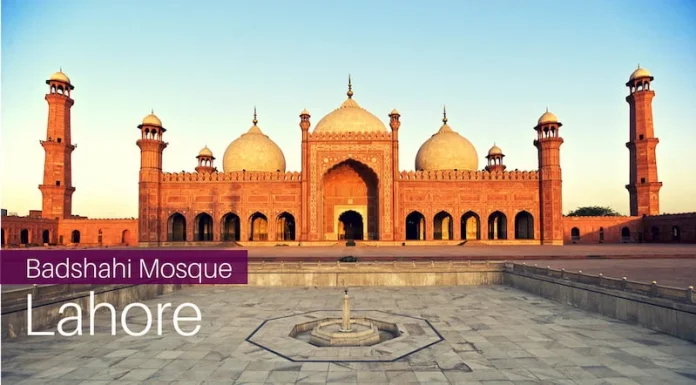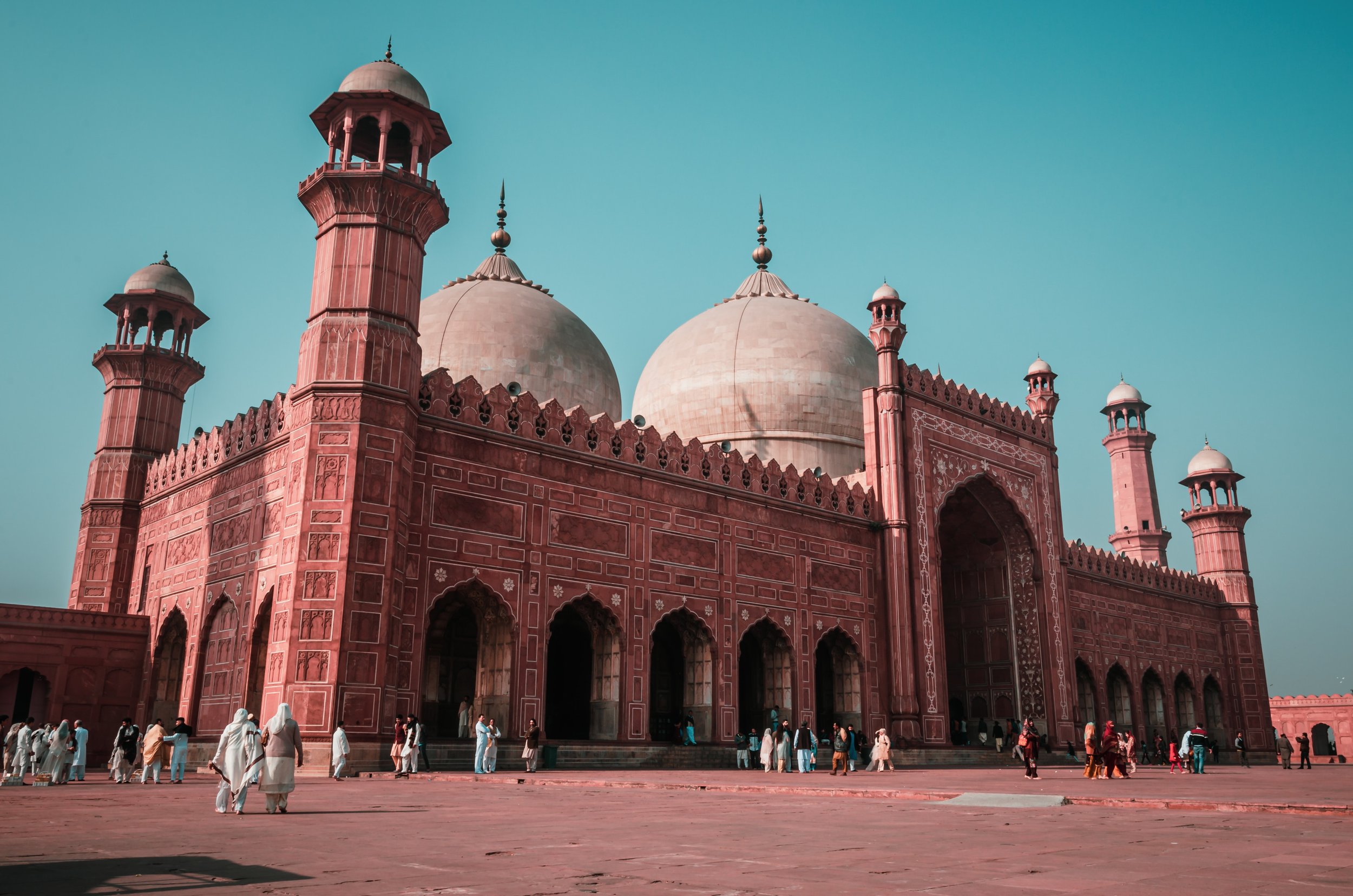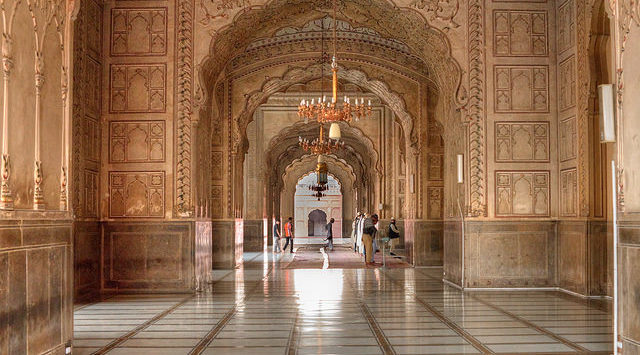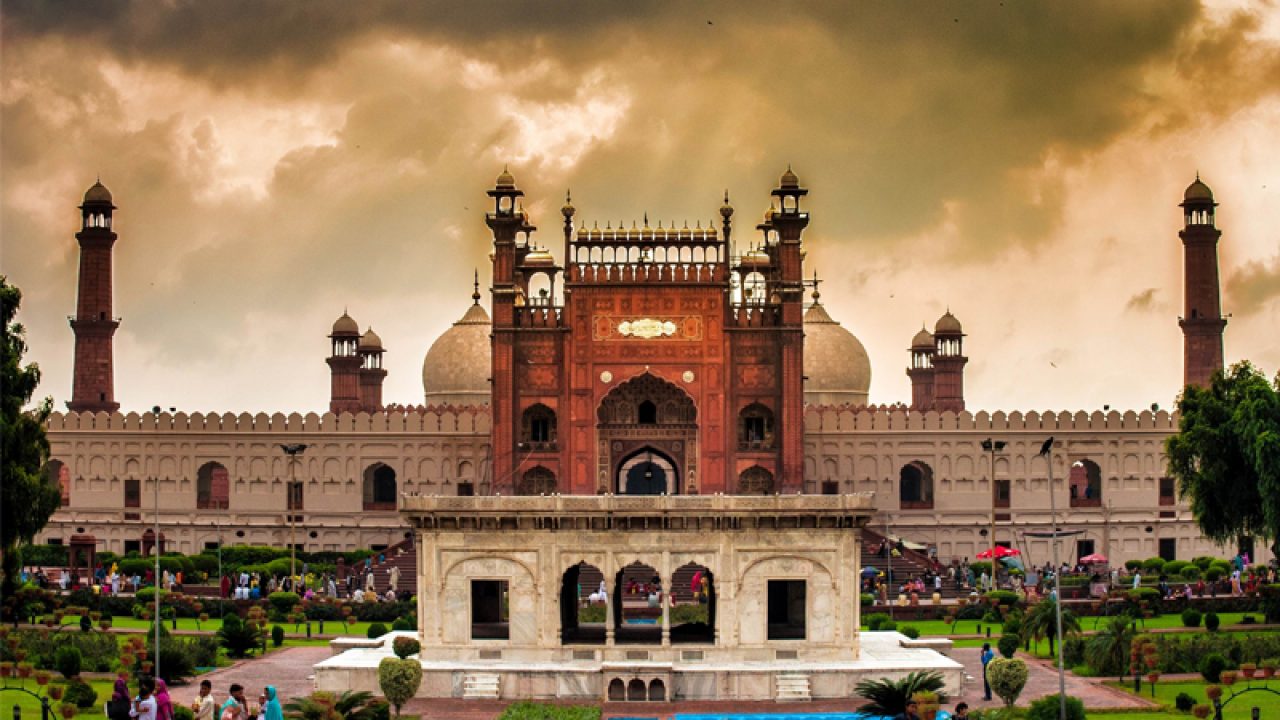Badshahi Mosque Lahore, also called Badshahi Masjid, and Old Lahore Fort, is the largest mosque in Pakistan. Mughal Emperor Aurangzeb Alamgir built the Badshahi Mosque in 1671 during his reign as the fifth Mughal Emperor of India.
Let’s learn more about Badshahi Mosque Lahore’s history, architecture and other details in this guide article!
General Information
Mughal Emperor Aurangzeb built the Badshahi Mosque in 1671 AD. The Badshahi Mosque is one of the few notable architectural structures that was constructed during Emperor Aurangzeb’s long tenure.
The mosque is located close to the Anarkali Bazaar in the southwest corner of the Walled City of Lahore.
The tomb of famous Sufi saint Shaikh Ahmad Faruqi Sirhindi, popularly known as Data Ganj Baksh or Bhagat Farid, lies within the premises.
They have officially registered it as a UNESCO World Heritage Site since 1981. People consider this mosque an exceptional example of Mughal architecture in Lahore, Pakistan.
Badshahi Mosque History
Badshahi Mosque is one of several Mughal-era mosques in Lahore. Construction started in 1673 under the orders of Emperor Aurangzeb. The mosque took decades to complete, during which multiple architects worked on it.
Mughal emperor- Aurangzeb selected Lahore to built of his new imperial mosque. They constructed the mosque as a memorial to commemorate the military campaigns that Aurangzeb led in southern India, namely against the Maratha king Shivaji.
They built it exactly across from the Lahore Fort and its Alamgiri Gate, both of which were constructed concurrently by Aurangzeb during the construction of the mosque.
Today it is Pakistan’s second-largest mosque after Faisal Mosque in Islamabad. It is also famous as Aurangzeb’s Friday Mosque since he always led prayers here on Fridays until his death.
Badshahi Mosque Architecture
The architecture of the Badshahi Mosque is simple, but magnificent. The construction of the mosque started in 1671, and it was directed by Muzaffar Hussain (Fida’i Khan Koka), who was also the governor of Lahore at the time and Aurangzeb’s brother-in-law.
The construction of the Badshahi mosque begun on 20th Moharram 1078 AH (16 October 1670). It took eight years to complete. The gigantic walls that surround the L-shaped mosque are 42 feet thick at the base and taper to 25 feet thick at the top.
A wide corridor runs around three sides of an open quadrangle; on each side are cloisters with arched recesses facing toward Mecca, from which Muslims can offer their prayers.
There are four minarets and no dome inside—only an imperial crown atop each minaret symbolizing there is only one God as far as Islam is concerned.Inside, it has 22 domes besides three larger ones at its main entrance.
Because of the mosque’s significance in the imperial vision, they built it only a few hundred metres to the west of Lahore Fort. This is because of the direction that the mosque faced.
The Alamgiri gate is a specialised entrance that was constructed as part of the fort and is located opposite the mosque.
Aurangzeb, once utilised as a parade ground the area that would eventually become the garden known as who would use it to inspect his troops and courtiers.
Since they constructed the mosque on a six-meter-high plinth to help avoid floods, the Hazuri Bagh gives the impression of being on a lower level than the mosque itself.
Visit Timings
It is open from 8 am to 5 pm on every day except Fridays. The prayer time starts with Fajr prayers at 4:30 AM. The last prayer of Asr comes at 12:30 PM followed by Maghrib prayers at 1:30 PM. Daily, 5 Namaz (prayers); one in each prayer time.
Special Namaz for each Friday is offered at Juma’ah Masjid courtyard. For night prayers there are two shifts per day: first shift from 10 pm to 11 pm, which is called Qadha Zoharain and second shift from 2 am to 3 am which is called Tahajjud Salaah or Shab-e-Qadr Salaah (Night Prayer).
Services Offered by Auqaf Department
During British rule, they damaged parts of the mosque. Later, the Pakistan government in the 1990s did the restoration work. At present, it is managed by the Auqaf department which has assigned the job of caretaker to the Masjid Management Committee.
The mosque remains closed for visitors on Fridays, unless royal funerals take place. In recent times, because of security reasons, the Pakistani government decided that they will not allow foreign nationals inside mosque premises.
How to Reach?
The mosque is near the Walled City of Lahore. Alamgiri Gate of the Lahore Fort is visible from the mosque’s entrance, which is on the western side of the rectangular Hazuri Bagh. Mosque stands south of Hazuri Bagh, beside Roshnai Gate, one of Lahore’s original thirteen gates.
The Tomb of Muhammad Iqbal, a poet regarded in Pakistan as the architect of the Pakistan Movement, which led to the establishment of Pakistan as a nation for British India’s Muslims, is near the mosque’s entrance. The mausoleum of Sir Sikandar Hayat Khan, who assisted in the mosque’s restoration, is near the entrance.






